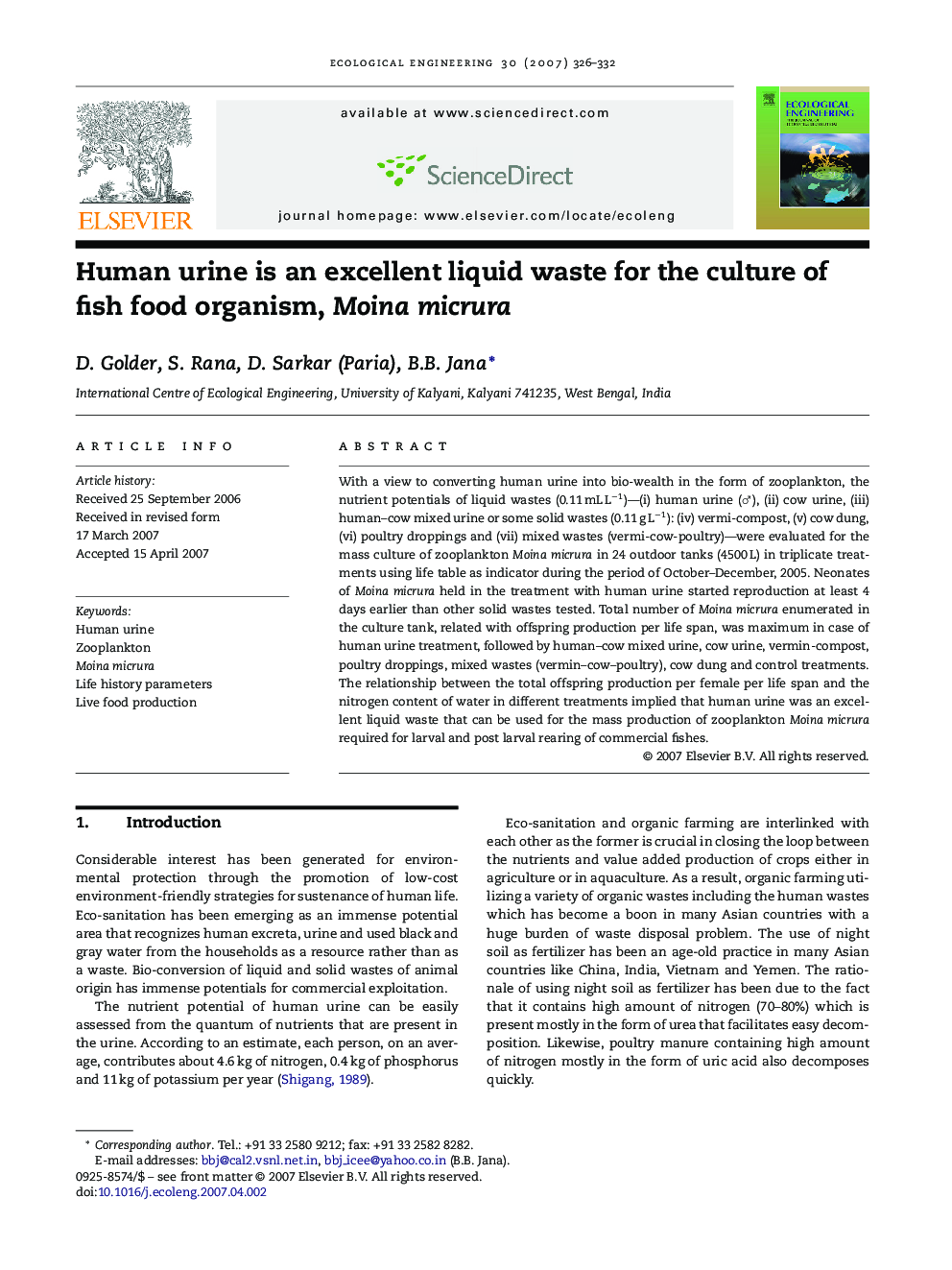| Article ID | Journal | Published Year | Pages | File Type |
|---|---|---|---|---|
| 4391076 | Ecological Engineering | 2007 | 7 Pages |
Abstract
With a view to converting human urine into bio-wealth in the form of zooplankton, the nutrient potentials of liquid wastes (0.11 mL Lâ1)-(i) human urine (â), (ii) cow urine, (iii) human-cow mixed urine or some solid wastes (0.11 g Lâ1): (iv) vermi-compost, (v) cow dung, (vi) poultry droppings and (vii) mixed wastes (vermi-cow-poultry)-were evaluated for the mass culture of zooplankton Moina micrura in 24 outdoor tanks (4500 L) in triplicate treatments using life table as indicator during the period of October-December, 2005. Neonates of Moina micrura held in the treatment with human urine started reproduction at least 4 days earlier than other solid wastes tested. Total number of Moina micrura enumerated in the culture tank, related with offspring production per life span, was maximum in case of human urine treatment, followed by human-cow mixed urine, cow urine, vermin-compost, poultry droppings, mixed wastes (vermin-cow-poultry), cow dung and control treatments. The relationship between the total offspring production per female per life span and the nitrogen content of water in different treatments implied that human urine was an excellent liquid waste that can be used for the mass production of zooplankton Moina micrura required for larval and post larval rearing of commercial fishes.
Related Topics
Life Sciences
Agricultural and Biological Sciences
Ecology, Evolution, Behavior and Systematics
Authors
D. Golder, S. Rana, D. Sarkar (Paria), B.B. Jana,
